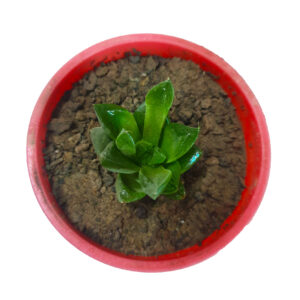Echeveria – The Black Prince
₹100.00
- Beautiful Darkest brown leaves
- Pointy and elegant leaf formation
- Easy to grow and care
- Requires less watering
- Hard leaves
- Comes to display better color in sunlight
- Can tolerate harsh summer conditions
Shipping- Shipping details- The succulents are first dried for a day or two and then sent bare root, carefully wrapped in a soft tissue paper with proper caution taken along with great packing. We don’t send succulents to soil as it can cause root damage. It’s easier to revive a dry plant but impossible to revive a rotten plant. hence we don’t take that risk as with soil, excess water can rott the plant
Out of stock
Description
Echeveria ‘Black Prince’ is a beautiful evergreen succulent that produces offsets (chicks). These chicks have more of a green color, but as they grow, their color darkens. Does well in garden beds or container gardens.
Watering
‘Black Prince’ has typical watering needs for a succulent. It’s best to use the “soak and dry” method, and allow the soil to dry out completely between waterings.
Where to Plant
‘Black Prince’ is not cold hardy, so if you live in a zone that gets colder than 20° F (-6.7° C), it’s best to plant this succulent in a container that can be brought indoors. It does well in full to partial sun.
Plant in an area of your garden that gets 6 hours of sunlight a day. If planting indoors, or bringing inside for the winter, place in a room that gets a lot of sunlight, such as near a southern-facing window (if you’re in the Northern Hemisphere).

Flowering and Pest Information
Echeveria ‘Black Prince’ produces red flowers in the late Fall to early Winter. These can attract hummingbirds.
Echeveria seem to be especially susceptible to mealy bug infestations.
How to Propagate Echeveria ‘Black Prince’
Echeveria ‘Black Prince’ propagates on its own by producing offsets. You can also propagate it from leaves and cuttings.
Leaves
You can propagate the leaves of ‘Black Prince’ by choosing a firm, healthy leaf. Remove it from the main plant by gently twisting the leaf from the stem. Be sure not to leave any of the leaf on the stem (if you take a bit of the stem with the leaf, that’s fine, too!).
Allow the leaf to callous over for several days, and then lay on well-draining soil. Water whenever the soil has dried completely. After roots and a rosette have appeared, and the mother leaf has withered away, plant the new growth.
Offsets















Reviews
There are no reviews yet.